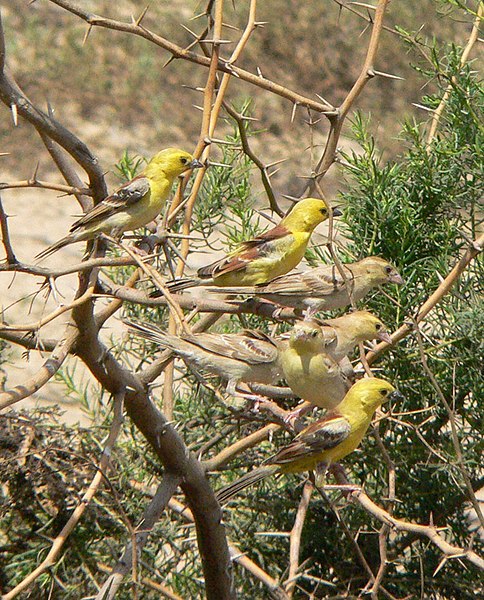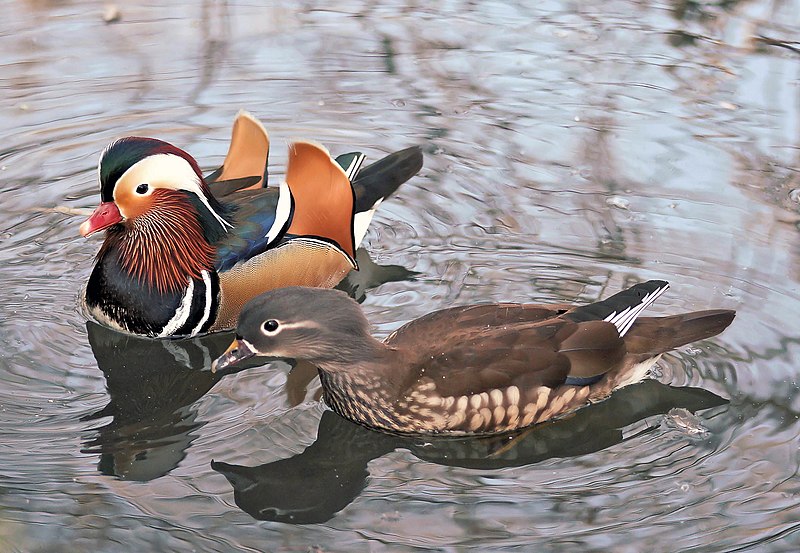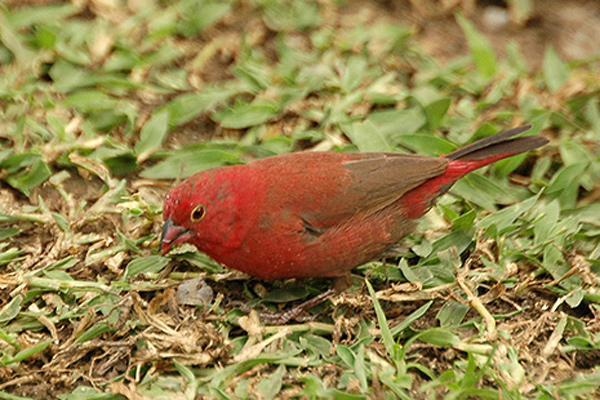 One glance at a male Golden Sparrow (Passer/Auripasser luteus) will quickly dispel the common notion that all sparrows are drab, uninteresting creatures. Also known as the Yellow Sparrow, Sudan Golden Sparrow and Golden Song Sparrow, the bright yellow-gold plumage of some males, offset by chestnut-colored wings, outshines that of the better-known Canary. Read More »
One glance at a male Golden Sparrow (Passer/Auripasser luteus) will quickly dispel the common notion that all sparrows are drab, uninteresting creatures. Also known as the Yellow Sparrow, Sudan Golden Sparrow and Golden Song Sparrow, the bright yellow-gold plumage of some males, offset by chestnut-colored wings, outshines that of the better-known Canary. Read More »
Category Archives: Bird Breeding
Feed SubscriptionIntroducing a Lorikeet Rule-Breaker – the Black Lory
 Lories are among the most spectacularly-colored of all Psittacines, with the popular pet-trade species exhibiting an array of “screaming” red, blue, green and violet feathers (please see photo of the aptly-named Rainbow Lorikeet). But there are somberly-colored members as well, typified by the Black Lory, Chalcopsitta atra (sometimes also known as the Rajah or Red-Quilled Lory). But when it comes to lories, “somber” does not in any way equate with “dull”. The jet-black plumage of this beauty is highlighted by a purple sheen and dark orange-red eyes, leaving one with an impression that is not soon forgotten.
Lories are among the most spectacularly-colored of all Psittacines, with the popular pet-trade species exhibiting an array of “screaming” red, blue, green and violet feathers (please see photo of the aptly-named Rainbow Lorikeet). But there are somberly-colored members as well, typified by the Black Lory, Chalcopsitta atra (sometimes also known as the Rajah or Red-Quilled Lory). But when it comes to lories, “somber” does not in any way equate with “dull”. The jet-black plumage of this beauty is highlighted by a purple sheen and dark orange-red eyes, leaving one with an impression that is not soon forgotten.
Range and Habitat
The Black Lory ranges over Western New Guinea (the Western portion of Papua New Guinea’s Vogelkop Peninsula and Western Irian Jaya) and the nearby islands of Batanta and Salawati. Four subspecies have been described.
The little field research that has been carried out indicates that Black Lories favor forest edges and sparsely-wooded grasslands. Isolated tree stands in largely cleared areas are frequented, but they seem rarely if ever to penetrate very far into thickly-wooded habitats. Large flocks, sometimes comprised of several species of lories and other birds, have been recorded.
Considerations for Prospective Owners
Black Lories exhibit many of their tribe’s desirable traits – constant activity, a curious demeanor and a willingness to bond with people if treated kindly – as well as those considered “not-so-desirable” – a loud, high pitched call that they employ most enthusiastically and an often aggressive attitude towards other birds.
In common with related species, Black Lories are quite sensitive to cold, damp conditions. Their size (to 12.5 inches) and high energy levels suit them well for outdoor aviary maintenance, but in temperate regions they must be brought inside during the cooler months. Indoor winter temperatures of 72-75 F are sufficient.
Diet
While Black Lories have been kept on a diet comprised largely of high quality commercial lory food, when caring for these birds at an importing facility years ago I favored a more complex diet.
Following the advice of several older bird-keepers of my acquaintance, I used commercial lory nectar but also provided twice-daily feedings of a fruit/vegetable pulp (pears, various berries, apples, pineapple, carrots, cucumber, honey). To this was added egg food, rice flour and high-protein baby cereal, along with a variety of seeds, kale, sprouts and other greens, and fruit tree branches (with blossoms in season).
Breeding
Although some breeding success has been had in large indoor cages, it is preferable to establish a mated pair outdoors in a quiet location.
Black Lories favor large nest boxes – one measuring approximately 16” x 16” x 22” will do nicely. A typical clutch consists of 2 eggs, which are incubated for 22-24 days. The young fledge in approximately 2 months. Perhaps due to their high metabolisms, Black Lory parents require extra-large quantities of high quality foods.
Further Reading
You can read about the conservation status and IUCN evaluation of the Black Lory here.
Amusing video of a Black Lory bathing.
Black Lorikeets image referenced from wikipedia and originally posted by elvranharris and snowmanradio
Mandarin and Wood Ducks – Spectacular Waterfowl for the Outdoor Aviary – Part 2

Mandarin and Wood Ducks – Spectacular Waterfowl for the Outdoor Aviary – Part 1
Aviculturists desiring to keep ducks are fortunate in that two of the world’s most brilliantly-colored species, the Mandarin Duck (Aix graiculata) and the Wood Duck (Aix sponsa), are small, hardy and have long been bred in captivity. Despite occupying opposite ends of the globe, their natural histories and captive care are very similar. While the decision to keep aquatic birds should not be made lightly, either of these little beauties makes an excellent “first duck” for those with the means to provide for them. Read More »
The Red-Billed or African Firefinch – Captive Care and Breeding
 Also known as the Senegal Firefinch (Lagonosticta senegala), this spectacular African import is one of the few entirely red-colored birds available to aviculturists. Northern Cardinals, one of my favorites, are not legal to keep here in the USA…the Red-Billed Firefinch is the only species I’ve found that comes close to matching it’s brilliant plumage. They are not rare in the wild or captivity, but never lose their appeal – even to lifelong bird keepers, Firefinches always seem “special”.
Also known as the Senegal Firefinch (Lagonosticta senegala), this spectacular African import is one of the few entirely red-colored birds available to aviculturists. Northern Cardinals, one of my favorites, are not legal to keep here in the USA…the Red-Billed Firefinch is the only species I’ve found that comes close to matching it’s brilliant plumage. They are not rare in the wild or captivity, but never lose their appeal – even to lifelong bird keepers, Firefinches always seem “special”.
Range and Habitat
Ranging throughout much of Africa south of the Sahara, Firefinches have adapted well to people…in many developed areas their chirping is among the most familiar of the day’s sounds. The typical natural habitat is savanna, overgrown scrub and the edges of lightly-wooded areas.
Several related species, some of which are equally as gorgeous as the Red-Billed Firefinch, also occur in Africa, but none are well-established in captivity. Read More »
 That Bird Blog – Bird Care and History for Pet Birds
That Bird Blog – Bird Care and History for Pet Birds
